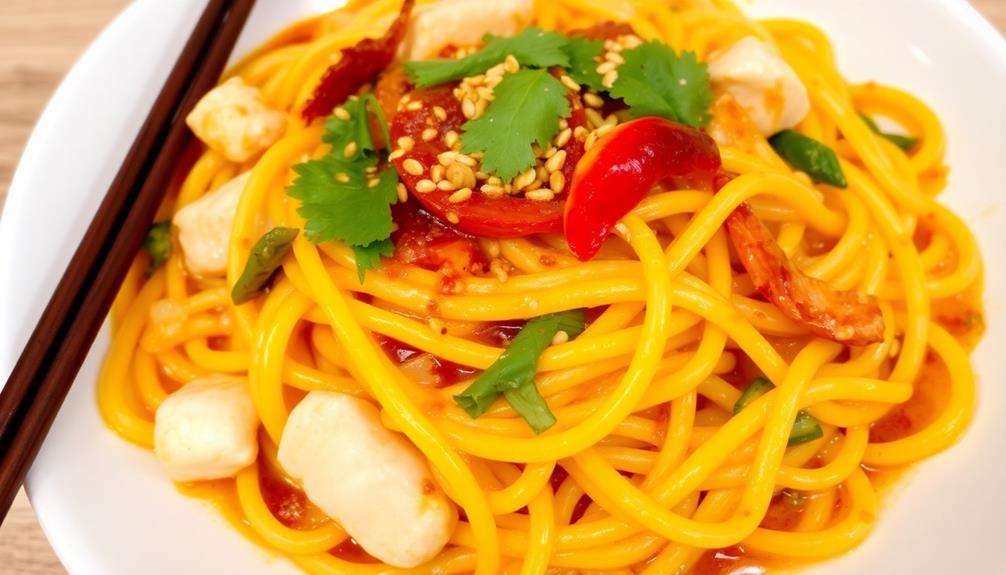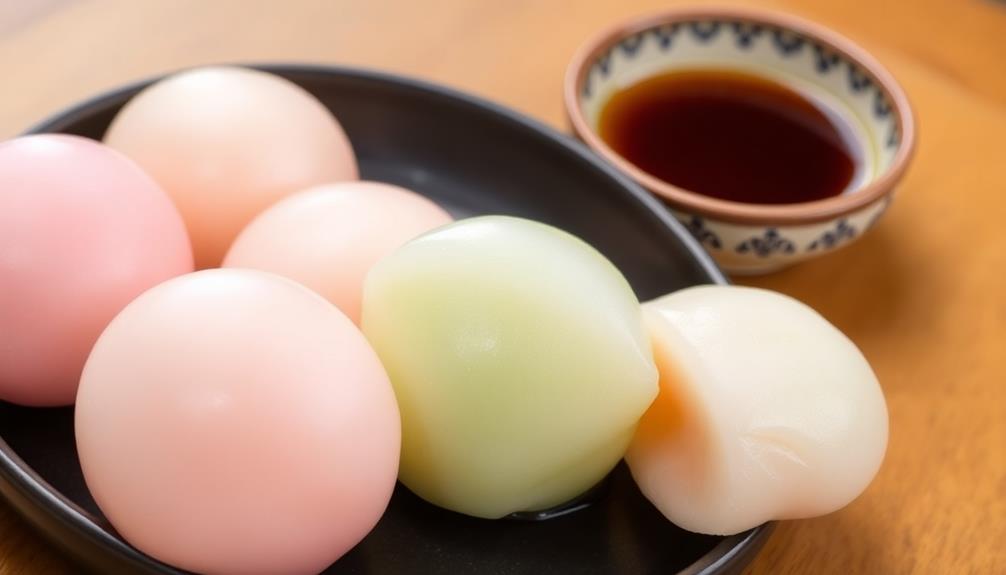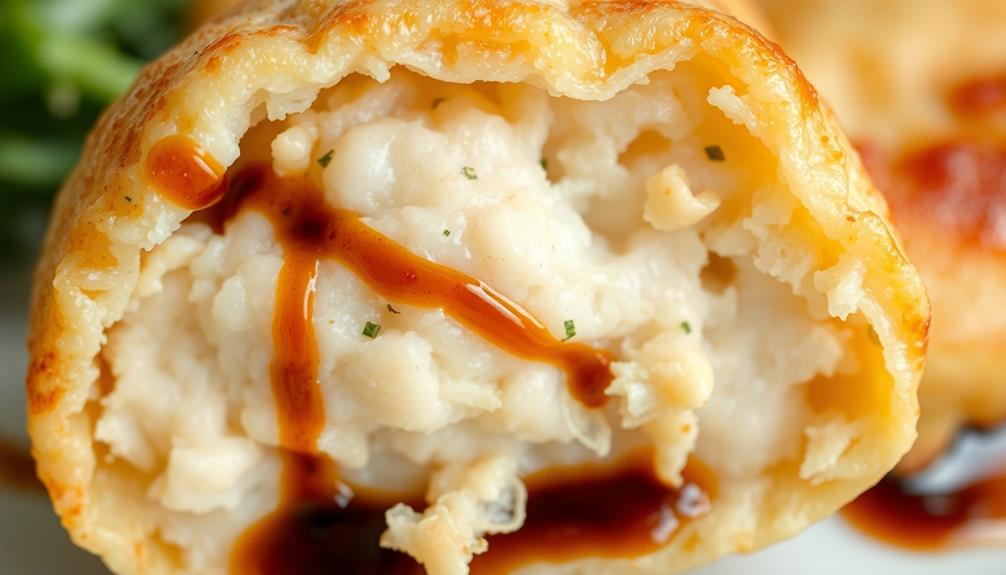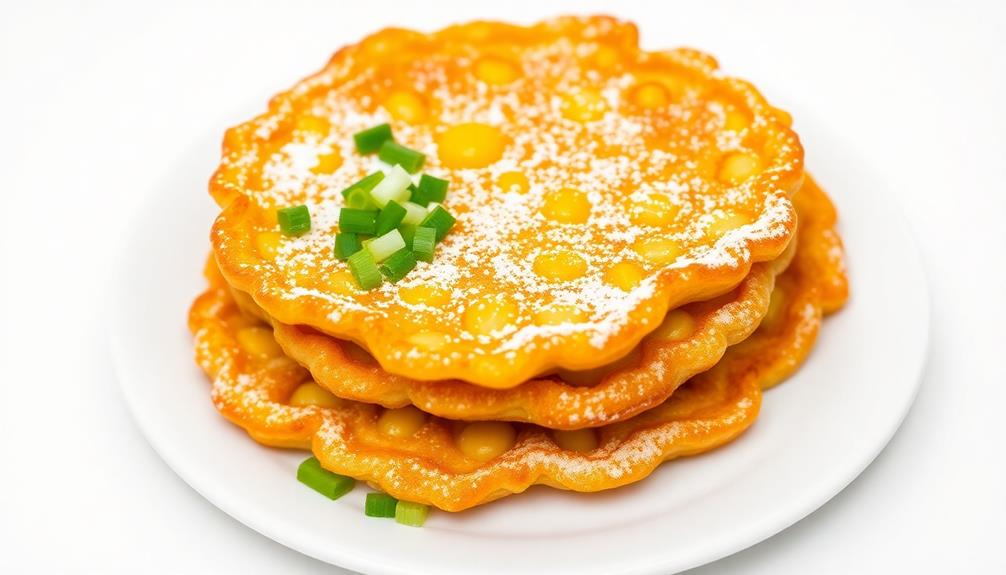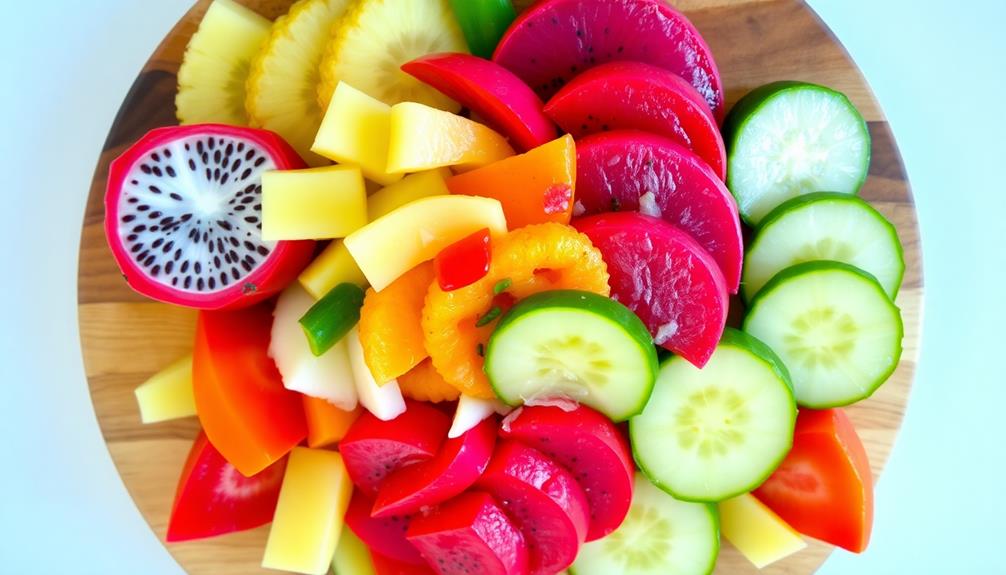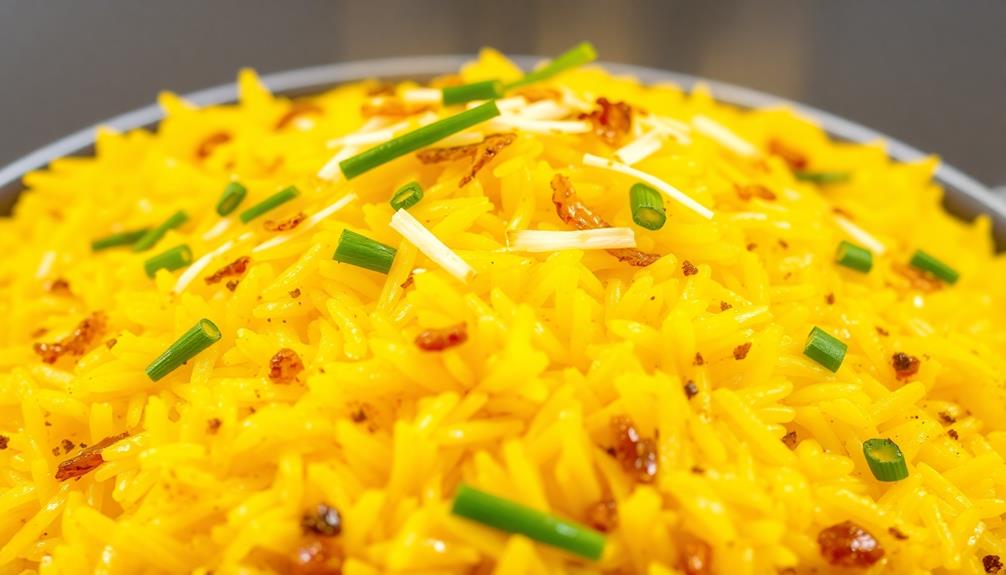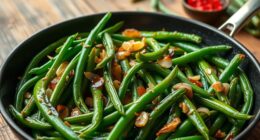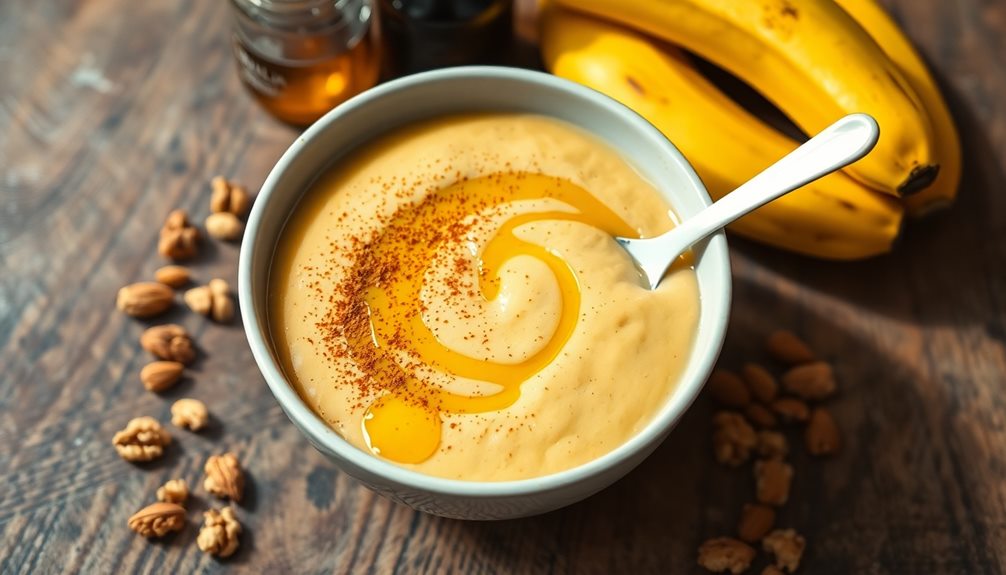Mie Goreng, a popular Indonesian fried noodle dish, delights the senses with its savory and slightly spicy flavors. Rooted in Indonesia's diverse culinary traditions, this dish blends Chinese cooking influences with indigenous ingredients and spices. You'll enjoy the satisfying textures of the noodles, vegetables, and optional protein, all enhanced by aromatic spices. The preparation is simple and accessible, allowing you to customize the recipe to your preferences. Whether you're craving a hearty main course or a flavorful side, Mie Goreng offers a delightful taste of Indonesia's rich culinary heritage. Let's explore more about this captivating dish.
Key Takeaways
- Mie Goreng is a popular Indonesian fried noodle dish with origins rooted in the country's diverse culinary traditions and Chinese cooking influences.
- The dish is known for its savory and slightly spicy flavor profile, achieved through the use of soy sauce, kecap manis, and aromatic spices.
- Mie Goreng is a versatile dish that allows for customization with various proteins and vegetables, making it accessible for home cooks.
- The preparation method involves stir-frying noodles with the desired ingredients, resulting in satisfying textures and a memorable dining experience.
- Mie Goreng can be enjoyed as a main course or a side dish, with garnishes like crispy fried shallots or fresh herbs enhancing the overall presentation.
History
The origins of Mie Goreng can be traced back to the diverse culinary traditions of Indonesia. For centuries, the islands of Indonesia have been a melting pot of cultures, each contributing unique flavors and cooking techniques to the local cuisine.
Mie Goreng, or fried noodles, is a prime example of this rich cultural exchange and embodies the principles of energy-efficient systems through its use of local, sustainable ingredients.
The dish's roots can be found in the Chinese influence on Indonesian food, particularly the introduction of noodles and stir-frying methods. Over time, Indonesian cooks adapted these foreign elements, blending them with indigenous ingredients and spices to create the vibrant, flavorful Mie Goreng we know today.
The result is a delicious fusion of East and West, reflecting the dynamic history and diverse flavors that make Indonesian cuisine so captivating.
As you explore the history of Mie Goreng, you'll uncover the stories and traditions that have shaped this iconic dish. From its humble beginnings to its widespread popularity, Mie Goreng is a testament to the richness and diversity of Indonesia's culinary heritage.
Recipe
Mie Goreng is a popular Indonesian fried noodle dish that can be enjoyed as a main course or a side dish. The dish is known for its savory and slightly spicy flavor, which comes from a blend of soy sauce, kecap manis (sweet soy sauce), and a variety of aromatic spices.
Preparing Mie Goreng is a straightforward process that can be easily mastered by home cooks. The dish is versatile, allowing for the incorporation of various proteins, vegetables, and condiments to suit individual preferences.
- 300g egg noodles (dried or fresh)
- 2 tbsp cooking oil
- 3 cloves garlic, minced
- 1 onion, diced
- 2 cups shredded cabbage
- 1 carrot, julienned
- 2 eggs, beaten
- 2 tbsp kecap manis (sweet soy sauce)
- 2 tbsp soy sauce
- 1 tsp salt
- 1/2 tsp white pepper
- 2 green onions, sliced
In a large wok or skillet, heat the cooking oil over medium-high heat. Add the minced garlic and diced onion, and sauté until fragrant and translucent.
Add the shredded cabbage and julienned carrot, and stir-fry for 2-3 minutes, or until the vegetables are tender-crisp.
Create a well in the center of the wok and pour in the beaten eggs. Allow the eggs to cook for 30 seconds to 1 minute, then gently scramble them. Incorporate the cooked eggs into the vegetable mixture.
Add the cooked noodles, kecap manis, soy sauce, salt, and white pepper. Toss everything together until the noodles are evenly coated and heated through.
To serve, transfer the Mie Goreng to a serving plate and garnish with sliced green onions. Adjust the seasoning to taste, if desired.
For best results, enjoy the Mie Goreng immediately while it's hot and fresh.
Cooking Steps
First, you'll boil the noodles according to the package instructions.
Next, stir-fry the veggies in a bit of oil until they're tender.
Then, add the tasty sauce and your choice of protein.
Don't forget to stir in some chili paste for a spicy kick!
Step 1. Boil Noodles According to Package

Next, you'll want to boil the noodles according to the package instructions. This is a crucial step in preparing the perfect Mie Goreng.
Grab your pot and fill it with water, then bring it to a boil over high heat. Once the water is bubbling away, gently add the noodles. Be careful not to overcrowd the pot – you want the noodles to have enough room to cook evenly.
Set a timer to follow the recommended cooking time on the package. Stir the noodles occasionally to prevent them from sticking together.
When the timer goes off, quickly drain the noodles in a colander. Don't let them sit too long, or they'll become sticky and clump up.
Rinse the noodles under cool running water to stop the cooking process. Now, they're ready to be added to your stir-fried Mie Goreng dish! The perfectly cooked noodles will soak up all the delicious flavors.
Step 2. Stir-Fry Vegetables in Oil

With the noodles prepped, it's time to stir-fry the vegetables.
Heat a large skillet or wok over medium-high heat and add a few tablespoons of oil. Once the oil is hot, add your chopped veggies. Stir-fry them quickly, keeping them moving in the pan. You want them to be tender-crisp, not soggy. Add a pinch of salt and pepper to season the veggies. As they cook, they'll release their natural juices, which will help create a flavorful sauce.
After a few minutes, the vegetables should be cooked through but still have a bit of bite to them.
Turn off the heat and transfer the stir-fried veggies to a plate or bowl. Now it's time to add the noodles and finish the dish! Be careful not to overcrowd the pan – work in batches if needed to ensure even cooking.
With the vegetables prepped, you're one step closer to a delicious plate of Mie Goreng.
Step 3. Add Sauce and Protein

To the stir-fried vegetables, now add the prepared noodles. Toss everything together until the noodles are fully coated and heated through.
Next, it's time to add the sauce. Pour in the sweet soy sauce, known as kecap manis, and stir to combine. This sauce gives the dish its signature glossy, caramelized appearance and deep, complex flavor.
Don't forget the protein! Sliced chicken, beef, or shrimp make excellent additions. Simply add your chosen protein and continue to stir-fry until it's cooked through.
The key is to work quickly, keeping everything moving in the pan to prevent the noodles from sticking or burning.
Once the sauce has thickened and the protein is hot, your Mie Goreng is ready to serve. Garnish with a sprinkle of crispy fried shallots or a handful of fresh cilantro for a vibrant finishing touch.
Enjoy this flavorful Indonesian classic!
Step 4. Add Chili Paste
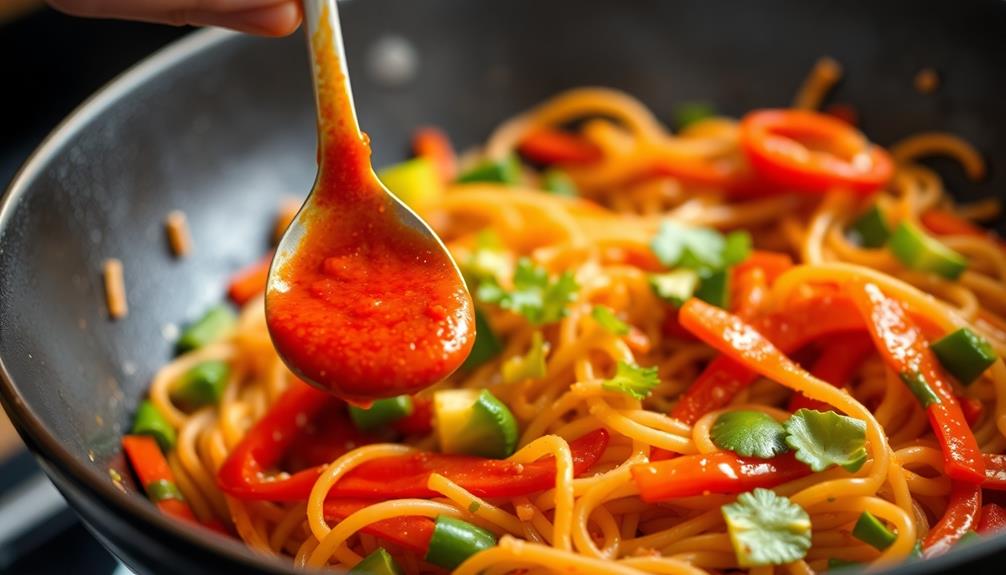
After adding the sauce and protein, it's time to give your Mie Goreng an extra kick of flavor. Chili paste is the perfect way to do this!
Grab a spoonful of your favorite spicy paste and stir it into the noodle mixture. The fiery heat from the chili paste will dance on your tongue, complementing the savory flavors of the sauce and protein.
Don't be afraid to add a little at a time, tasting as you go, until you reach your desired level of spiciness. The chili paste will infuse the entire dish with its bold, zesty essence, making each bite more thrilling than the last.
You'll love how the heat from the chili paste adds an exciting new dimension to your Mie Goreng, taking the flavors to the next level.
Get ready to feel the burn and savor every delicious mouthful!
Step 5. Serve Mie Goreng Hot
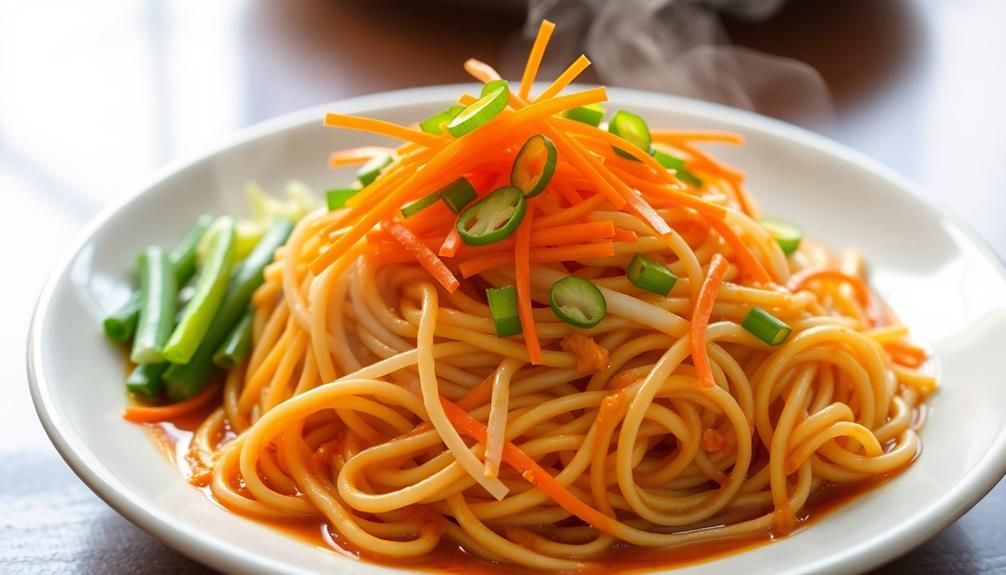
Once your Mie Goreng is perfectly seasoned, it's time to serve it hot and fresh. The aroma will fill the air, making your mouth water in anticipation.
Don't let it sit and cool down – act quickly to ensure your noodles retain their perfect texture.
Grab a plate and pile the steaming Mie Goreng high. The colorful mix of vegetables, meat, and noodles should look absolutely irresistible.
Sprinkle a little extra fried shallot or crispy anchovies on top for that final flavor boost. If you want to get fancy, you can even garnish it with a fresh lime wedge or a sprig of cilantro.
Serve the Mie Goreng immediately while it's piping hot. The noodles should still have a nice bite to them, not soggy or clumped together.
Take a deep breath and savor that incredible aroma one more time before digging in. This flavorful dish is meant to be enjoyed at its peak temperature and texture.
Go ahead, take that first delicious bite!
Final Thoughts
Ultimately, mie goreng proves to be a delightfully versatile dish that can be tailored to individual tastes.
Whether you prefer it spicy, savory, or somewhere in between, this vibrant stir-fried noodle dish is sure to delight your palate. The beauty of mie goreng lies in its ability to incorporate a wide array of ingredients, allowing you to experiment and find your perfect flavor combination.
As you've learned, the process of making mie goreng is straightforward, making it an accessible and rewarding cooking experience.
The satisfying textures and aromatic spices come together to create a truly memorable meal. Don't be afraid to get creative and put your own spin on this Indonesian classic. One way to put your own spin on this Indonesian classic is by personalizing the ingredients. You can add extra vegetables or protein to make it heartier, or adjust the spice levels to your preference. Another fun way to make it your own is by serving it with a unique side dish or accompaniment, such as a tangy salsa or a refreshing cucumber salad. For a sweet finish, you can also try making your own es cendol recipe, a traditional Indonesian dessert made with pandan-flavored rice flour jelly, coconut milk, and palm sugar syrup.
With a little practice, you'll be whipping up mie goreng like a pro in no time.
Frequently Asked Questions
Is Mie Goreng Vegetarian-Friendly?
Whether mie goreng is vegetarian-friendly depends on the recipe. Some versions may include meat or seafood, making them unsuitable for vegetarians. However, you can find vegetarian-friendly variations that use only plant-based ingredients, catering to your dietary preferences.
Can I Use Different Types of Noodles?
You can absolutely use different types of noodles! Feel free to experiment with rice noodles, egg noodles, or even spiralized veggies. Just adjust the cooking time and seasoning as needed to suit your chosen noodle.
How Long Does It Take to Prepare Mie Goreng?
Preparing the dish takes around 20-30 minutes, depending on your cooking skills and the complexity of the recipe you're following. You'll need to chop the ingredients, cook the noodles, and stir-fry everything together for a delicious meal.
Can I Make Mie Goreng in Advance?
You can definitely make this dish in advance. The noodles will hold up well in the fridge for a few days. Just be sure to reheat it thoroughly before serving to ensure it's piping hot.
Is Mie Goreng Suitable for Children?
Yes, mie goreng can be a suitable meal for children. The ingredients are generally kid-friendly, and you can adjust the spice level to their taste. Just be mindful of portion sizes and any dietary restrictions they may have.
